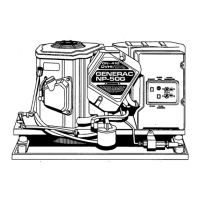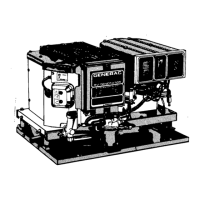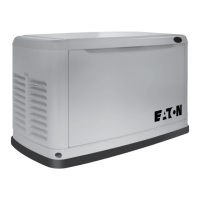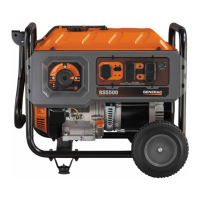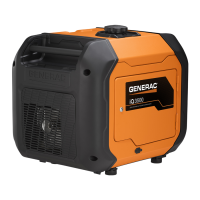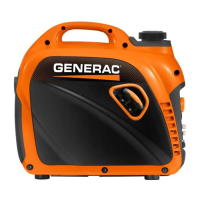COMPARTMENT
SIZE
Plan the compartment size carefully. Provide a mini-
mum of at least 1 inch
(2"
recommended)
of clearance
between the generator and
compartment
walls and
1 inch
(2"
recommended) of clearance between the
generator and the ceiling AFTER you have
lined the
compartment
with
metal,
and
AFTER
you
have
installed sound insulation (Figure 16).
NOTE: Refer to the "Dimensions and Features" draw-
ing
in
the back of this manual.
PLYWOOD
COMPARTMENT
1
INCH
MINIMUM
CLEARANCE
01\1
ALL
SIDES
{2"
RECOMMENDED)
METAL
UNING--
.__
__
INSULATION
11NCH
MINIMUM
CLEARANCE
ABOVE
GENERATOR
(2"
RECOMMEND-
ED)
COMPARTMENT
CONSTRUCTION
•
The
generator compartment
should
be
constructed
of
1/2
inct1
thick
plywood.
Make
the
compartment
floor
a
double
thickness
of
1/2
inch
plywood
with
the
grain
of
the
wood
at
cross
section
for
added
strength
(Figure
17).
CROSS·SECTION
VIEW
IIEIALUNING
•
Line
the
entire
compartment interior
with
26
gauge
galva-
nized
steel
as
described
above.
•
Line
the
exterior (underside)
of
the
compartment floor
with
26
gauge
galvanized
steel.
•
Vapor
seal
all
compartment
seams
and
joints,
to
prevent
poisonous,
flammable
or
explosive
vapors
from
entering
the
vehicle interior.
Refer
to
the
sealant information
as
noted
below.
NOTE: Silicone rubber base sealant
is
an
acceptable
caulking material. Pressing putty tape onto compart-
ment joints and seams
is
NOT acceptable.
• After the compartment has been metal lined and
vapor sealed, line the compartment interior walls
and ceiling with an
approved,
non-flammable
sound insulating matenal. See "Sound Insulating
Materials."
DANGER: DO NOT
INSTALl
SOUND INSU-
LATION OR ANY
ABSORBENT
MATERIAL
ON THE
COMPARTMENT
FLOOR
INTERI-
OR.
SUCH
MATERIALS
WILL
BECOME
SOAKED WITH COMBUSTIBLE OR EXPLO-
SIVE
VAPORS
AND
LIQUIDS
AND
Will
BECOME A FIRE HAZARD.
" Openings
in
compartment walls
for
passage of
electrical conduit, conductors, hoses, cables, etc.,
must be made vapor tight with suitable caulking
material.
• Flexible conduit must be sealed internally at the
end where
it
terminates inside a compartment's
electrical junction box.
NOTE: The preceding is required because flexible
conduit, due to its unique construction,
is
not vapor-
tight along its entire length.
DANGER:
DO
NOT
INSTAlL
ANY
FLAMMABLE
MATERIAL
DIRECTlY
ABOVE
OR
AROUND
THE
COMPARTMENT.
HEAT,
TRANSFERRED
THROUGH
THE
COMPARTMENT
STRUCTURE,
MAY
BE
SUF·
FICIENT
TO
IGNITE,
CHAR
OR
DISCOLOR
SEAT
CUSHIONS,
FIBERBOARD
AND
OTHER
FlAMMA·
BLE
MATERIALS.
YOU
MAY
NEED
TO
USE
APPROVED
NON-FlAMMABlE
INSULATING
MATERIALS
IN
HIGH
TEMPERATURE
AREAS.
SOUND
INSULATING
MATERIALS
Once installers have determined that compartments
are properly constructed and metal lined, they can
add acoustical material. This may include additional
sealant or insulating material, to reflect noise away
from the vehicle interior.
Sound insulating materials should be of a non-flam-
mable type. One excellent insulating material is a 1
inch thick fiberglass having a 2-pound density. When
fiberglass is used, its coated side should face toward
the compartment interior.
Using a combination of sound insulating materials can
often reduce noise
more
effectively
than
a single
material. For example, a sheet of lead or visco-elastic
material, along with a layer of other acoustical
materi-
al, is more effective than when a single material is
used.
-17-

